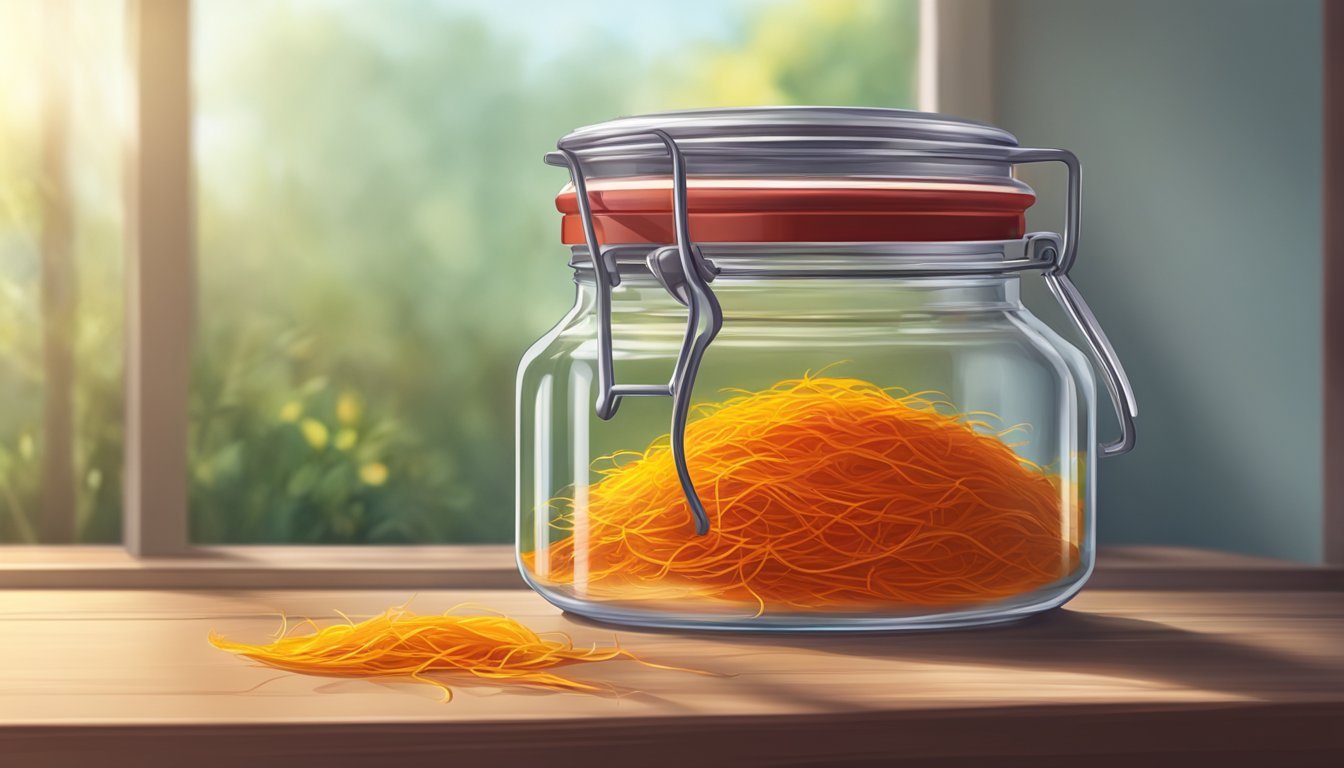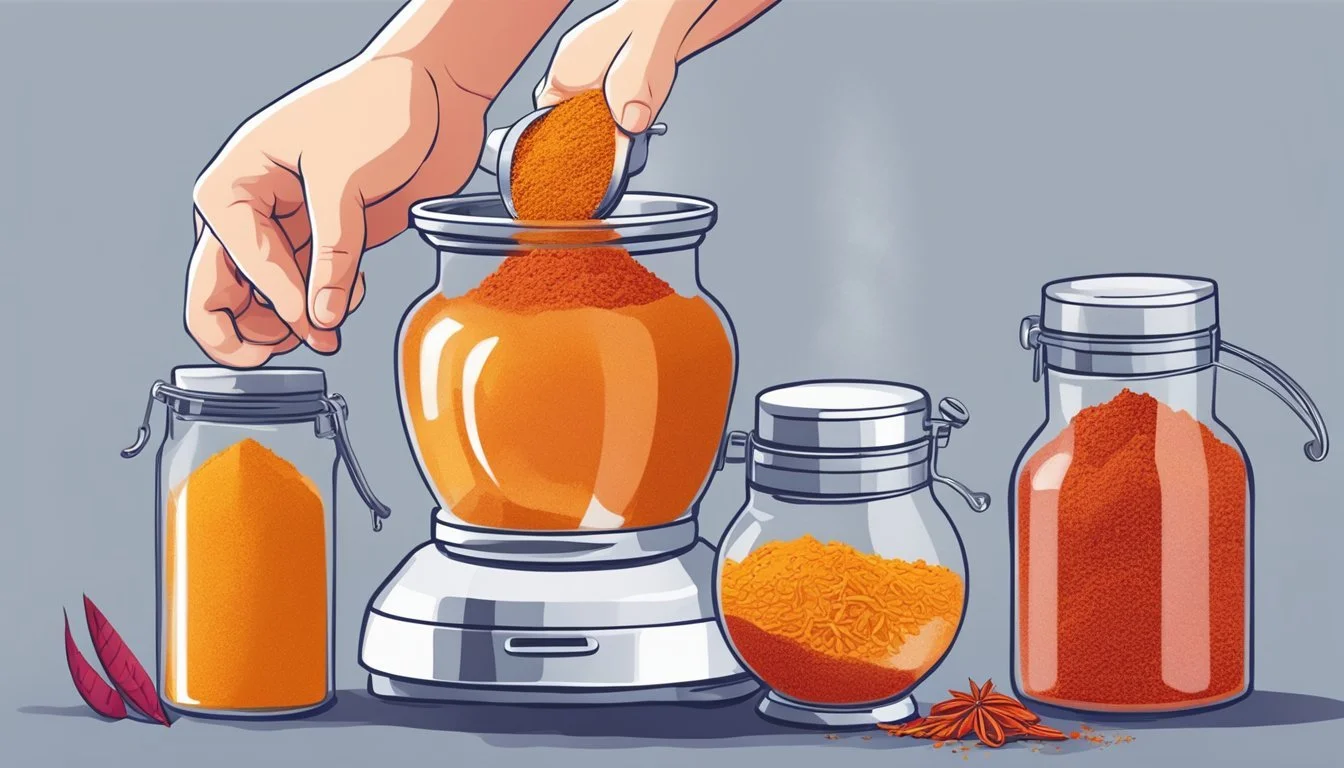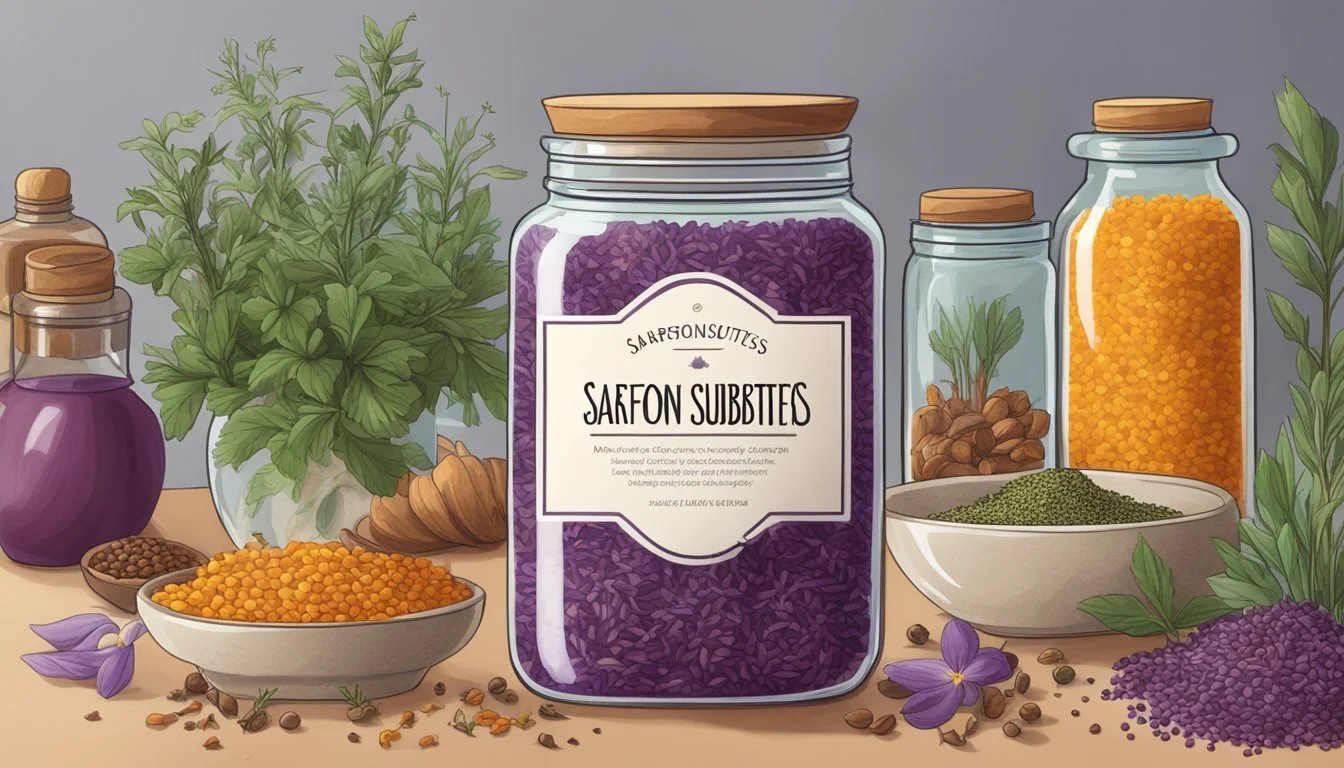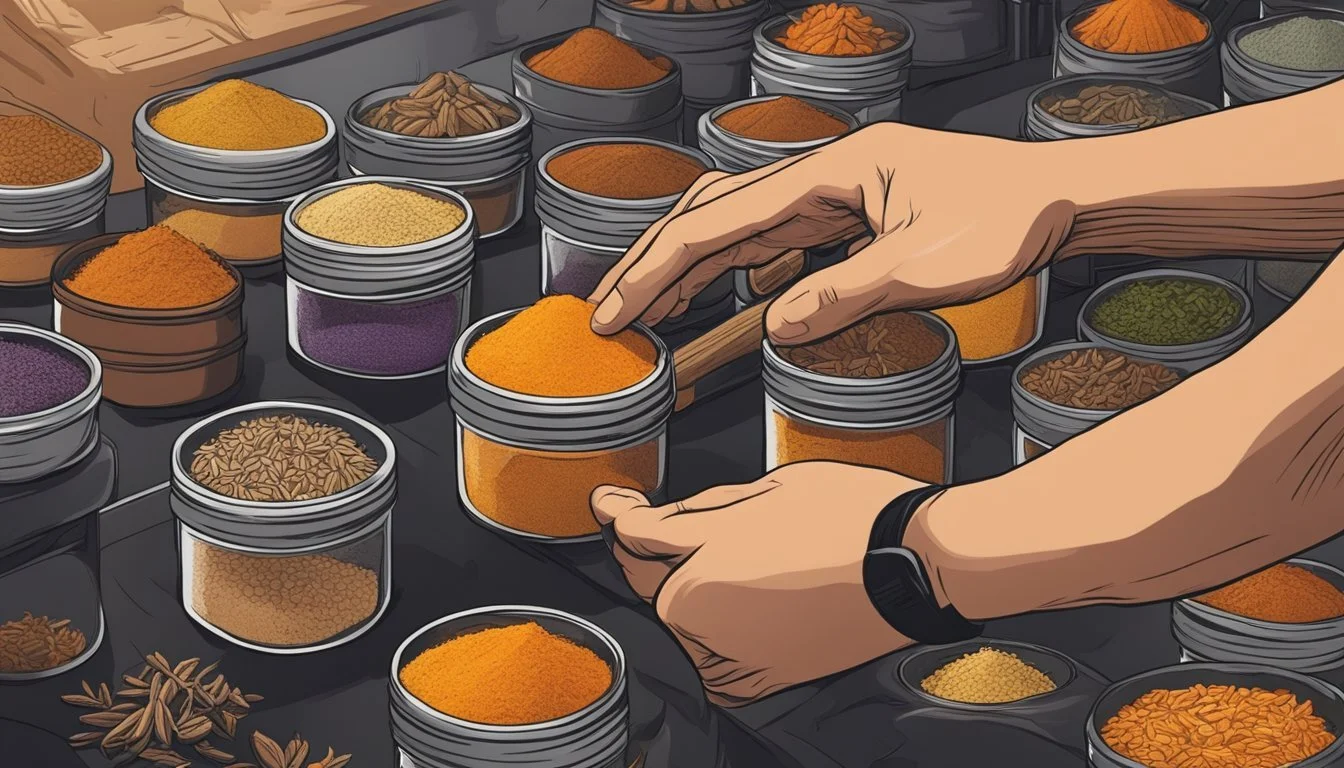Does Saffron Go Bad?
Shelf Life, Storage Tips, and Signs of Spoilage
Saffron, often hailed as the "king of spices," holds a revered place in many kitchens due to its unique flavor and vibrant color, enhancing dishes from various cuisines. This valuable spice, known for its expense, is prized not just for its taste but also for its versatility in cooking. Readers frequently ask, "Does saffron go bad?"
Yes, saffron can go bad, or more accurately, it can lose its potency and flavor over time. Proper storage is essential to retain its quality, with airtight containers being ideal to prevent the infiltration of moisture and light. If exposed to unfavorable conditions, saffron may become brittle, less aromatic, and even discolored.
To maximize the longevity of this precious spice, storing saffron in small batches in cool, dark places can be helpful. It can maintain its quality for up to two years when stored correctly at room temperature, and even longer if kept in the freezer. Thus, taking a few extra steps to store saffron properly will ensure that it continues to enrich your dishes with its distinctive essence.
What Is Saffron?
Saffron is a spice derived from the flower of Crocus sativus, commonly known as the crocus flower. Recognized for its distinct color and aroma, saffron is often referred to as "red gold."
The saffron threads are actually the stigmas of the flower, which are meticulously harvested by hand. Each flower only produces a small amount of saffron, making the harvest labor-intensive.
High-quality saffron comes from the Mediterranean and Middle Eastern regions. Countries like Iran, Spain, and India are leading producers, known for their premium saffron varieties.
Saffron contains several active compounds, including crocin and safranal, which are responsible for its vibrant color and distinct aroma. These compounds also contribute to the spice's health benefits.
Health Benefits:
Rich in antioxidants
Potential mood booster
May increase libido
When used in cooking, saffron adds a unique flavor and color to dishes. It is commonly used in Mediterranean and Middle Eastern cuisines, in dishes like paella and biryani.
Proper storage is essential to maintain the quality and potency of saffron. It should be kept in a cool, dry place, away from direct sunlight.
The Importance of Proper Saffron Storage
Proper saffron storage is critical for maintaining its potency, flavor, and color. Understanding the ideal conditions, the role of airtight containers, and the effects of light, moisture, and temperature ensures saffron remains fresh and valuable.
Ideal Storage Conditions
Saffron should be stored in a cool, dark place to extend its shelf life. Temperature control is vital, and maintaining a consistent, cool environment prevents the delicate threads from degrading.
Humidity plays a significant role as well. Keeping the saffron in a location with low humidity helps maintain its quality. Aim for a humidity level around 40-50%. A dry atmosphere minimizes the risk of moisture absorption, which could lead to mold or loss of potency.
Airtight Containers and Their Role
Airtight containers are essential for effectively storing saffron. These containers help by keeping moisture and oxygen out, which are the main culprits in spoilage.
Using airtight glass jars or metal tins with a secure seal can preserve the flavor and aroma of saffron. Additionally, small containers are recommended. By storing saffron in smaller batches, you limit its exposure to air each time the container is opened.
Effects of Light, Moisture, and Temperature
Light exposure can diminish both the color and potency of saffron. Store saffron in opaque or dark-colored containers to protect it from light. Alternatively, wrapping the container in foil can also be effective.
Moisture is another threat. Ensure that the storage area is dry and avoid placing saffron near sinks or windows where condensation might form. Moisture can lead to the growth of mold, making the saffron unusable.
Temperature fluctuations can affect saffron's quality. Keep saffron away from heat sources such as stoves or direct sunlight. Maintaining a stable, cool temperature helps preserve its shelf life and potency.
By following these storage guidelines, one can maximize the longevity and quality of saffron, ensuring it retains its unique properties for as long as possible.
Saffron Shelf Life
Saffron, prized for its flavor and color, has varying shelf life depending on its form and storage conditions. Properly stored saffron can last up to several years, though it may lose potency over time.
Whole Saffron Threads Vs. Powdered Saffron
Whole saffron threads generally have a longer shelf life compared to powdered saffron.
Whole Threads: When stored correctly in a cool, dark place and in an airtight container, whole saffron threads can maintain quality for up to two to three years. They are less exposed to air and light, which helps preserve their flavor and potency.
Powdered Saffron: Saffron that has been ground into powder tends to have a shorter shelf life. It is more exposed to air, which can cause it to lose its flavor within 6 to 12 months. It’s crucial to store powdered saffron in an airtight container to extend its usability.
Saffron in the Fridge Versus Room Temperature
Storing saffron at room temperature versus in the fridge can impact its longevity.
Room Temperature: Ideally, saffron should be stored in a cool, dark place such as a pantry. At room temperature, whole saffron threads can last up to two to three years, whereas powdered saffron remains viable for around 6 to 12 months.
Refrigerator: While refrigeration can prolong the shelf life of saffron, especially powdered saffron, it is not always necessary unless you live in a very humid or hot environment. When refrigerated, saffron can retain its properties slightly longer but should still be kept in an airtight container to avoid moisture exposure.
Signs of Expiration
Over time, saffron will lose its potency and flavor.
Color: Faded color is a sign of aging saffron. Fresh saffron has vibrant red threads, while older saffron might appear dull orange or yellow.
Aroma: Fresh saffron has a strong, distinctive aroma. If it’s starting to lose its scent, it might be past its prime.
Flavor: If the saffron has a weak flavor, it may have lost its potency. Given the high cost of saffron, it’s important to ensure it's always stored properly to maintain its quality.
Detecting Spoilage in Saffron
Detecting spoilage in saffron involves examining its color, aroma, flavor, and texture. Identifying mold and understanding the health risks associated with consuming spoiled saffron is also crucial.
Visual Indicators of Bad Saffron
Color is a primary indicator of saffron's freshness. Fresh saffron strands are deep red with slight orange-yellow tips. Bad saffron tends to lose its vibrant color, turning dull and pale.
The texture is another visual clue. Fresh saffron is supple and slightly pliable. Spoiled saffron becomes brittle and breaks easily. Moreover, any signs of moisture or clumping suggest that the saffron is no longer good for use.
Changes in Aroma and Flavor
Aromatic profile plays a significant role in identifying bad saffron. Fresh saffron exudes a unique, strong aroma that’s slightly floral and earthy. If the saffron has little to no scent or smells musty, it has likely gone bad.
The flavor also provides clear evidence of spoilage. Fresh saffron has a distinct, robust taste. Spoiled saffron loses this potency, leading to a weak or off flavor, rendering it ineffective for culinary purposes.
Mold and Health Risks
Mold presence is a serious spoilage indicator. Fresh saffron should be free from any visible mold or mildew. Spoiled saffron may exhibit white or greenish mold growth, making it unsafe for consumption.
Bacterial contamination is less visible but equally concerning. Consuming moldy or bacteria-laden saffron can lead to health issues such as stomach discomfort or allergic reactions. Ensuring saffron is free from such contaminants is vital to maintaining both flavor and safety.
Extending the Life of Saffron
To maximize saffron's shelf life, it's crucial to store it correctly. Key techniques include freezing and using proper packaging methods.
Freezing Saffron for Longevity
Freezing saffron can significantly extend its shelf life. By keeping saffron in the freezer, you help maintain its potency and prevent moisture from affecting its quality.
Steps to freeze saffron:
Place it in an airtight container to avoid moisture and odor contamination.
Ensure the container is labeled with the storage date.
Proper freezing can keep saffron viable for several years. However, unlike many other spices, it does not require frequent thawing, preserving its flavor and aroma over time.
Proper Packaging Techniques
Effective packaging is essential for preserving saffron. The best method involves using an airtight container that shields it from light and air. This prevents oxidation and helps maintain its vibrant color and unique aroma.
Key packaging tips:
Choose containers made of glass or metal, as they are less permeable than plastic.
Store saffron in a cool, dry place to avoid exposure to humidity, which can degrade its quality.
Keep the container away from direct sunlight and sources of heat.
Following these steps ensures that saffron retains its distinct characteristics for a longer period.
Using Saffron in Cooking
Saffron is a valuable spice known for its unique flavor, aroma, and vibrant color. It is essential to understand how to release its flavor effectively and the appropriate quantities required for various recipes to ensure optimal results.
Releasing Flavor in Saffron
To extract the most flavor from saffron, it is crucial to handle it correctly. Saffron should be bloomed before adding it to dishes. This involves soaking the threads in warm water, broth, or milk for about 5 to 10 minutes. This process releases the saffron's essence, enhancing its impact on recipes like paella, soups, and stews.
Ground saffron can be used as well, and it should also undergo the blooming process. Adding bloomed saffron early in the cooking stage ensures that the flavor thoroughly infuses the dish. Avoid combining saffron with overly pungent ingredients, as they can overshadow its delicate taste.
Quantity and Potency in Recipes
Saffron is potent, and a little goes a long way. Typically, a recipe may call for a pinch (about 20-25 threads) for 4 to 6 servings. Overusing saffron can lead to a bitter taste, so accurate measurement is essential. When incorporating saffron in dishes like risotto or desserts, it is recommended to purchase high-quality threads and grind them if necessary.
Using precise quantities is vital to maintain the desired flavor profile without overpowering the dish. Saffron's potency can diminish over time, so it is best stored in an airtight container away from light and moisture to preserve its quality. Proper usage and storage ensure that saffron remains a valuable addition to any culinary creation.
Saffron Substitutes and Alternatives
When saffron is unavailable or too costly, various substitutes can mimic saffron's flavor and color.
Culinary Substitutes
Paprika
Paprika can be used to achieve a similar color to saffron. Use 1/2 teaspoon of sweet paprika for every 1 teaspoon of saffron. It adds a mild, sweet flavor. Although paprika doesn't replicate saffron's unique taste perfectly, it works well in many dishes.
Turmeric
Turmeric is an excellent and affordable substitute. It provides a yellow hue similar to saffron and has a slightly bitter, earthy flavor. For substituting saffron, use 1/4 to 1/2 teaspoon of turmeric per 1 teaspoon of saffron. It pairs well with rice, soups, and stews.
Annatto
Annatto seeds or powder, known as "poor man's saffron," offer a slightly darker color than saffron. Use it in equal parts to saffron. Annatto imparts a mild, peppery flavor and is suitable for savory dishes like paella and rice dishes.
Safflower
Safflower is another option that mimics saffron's color but lacks its distinct taste. Use it as a visual substitute when saffron's flavor isn't critical. Safflower is relatively affordable and easy to find in stores.
Curry Powder
Curry powder, containing spices like turmeric, cardamom, and cumin, can be a complex substitute. Its robust flavor makes it ideal for hearty dishes. Adjust quantity based on taste, starting with a small amount and increasing if needed.
Questions of Cost and Consumption
Saffron’s cost and its careful consumption are essential considerations for both culinary and medicinal use. Proper usage optimizes its benefits while balancing expense.
Balancing Cost and Usage
Saffron is one of the most expensive spices in the world. The high cost is due to the labor-intensive process of harvesting the delicate stigma from the Crocus sativus flower. Despite this expense, a small quantity can significantly impact flavor and color in dishes.
For culinary use, typically only about 20-30 threads are needed to flavor and color a dish serving 4-6 people. This makes it possible to stretch a small amount over several meals. Proper storage, such as keeping saffron in an airtight container away from light, can preserve its potency and extend its shelf life, making the investment more worthwhile.
In medicinal contexts, saffron is valued for its antioxidant, anti-inflammatory, and mood-boosting properties. Given these health benefits, even the small amounts required can provide therapeutic effects, making it a valuable addition to the spice rack despite its cost.
Buying and Storing Saffron
Purchasing the right amount and properly storing saffron ensures its longevity and maintains its flavor. Details on how to buy and store saffron effectively are discussed below.
Deciding How Much to Buy
When purchasing saffron, it's important to consider how frequently it will be used. Since saffron gradually loses its potency over time, buying in small quantities is advisable. For occasional use, a few grams of saffron strands should suffice.
Bulk purchases might result in wastage unless there is a plan to use it frequently.
Whole saffron threads have a longer shelf life compared to powdered saffron. While strands can remain potent for up to two years, powder tends to lose its strength within six to twelve months. Prioritize buying saffron with a recent harvest date for maximum freshness.
Assessing Freshness at Purchase
Checking the freshness of saffron when buying is crucial. Fresh saffron threads are deep red and slightly moist to the touch. They should have a strong, distinct aroma. Avoid saffron that appears brittle or has an off smell.
Examining the packaging is also essential. Ideally, saffron should be sold in airtight containers to protect it from moisture and light. Look for information on the harvest date and sell-by date to ensure you're getting the freshest product possible.
Store saffron in foil within airtight containers in a cool, dark place to extend its shelf life. This helps in preserving its quality and flavor over time.
Characteristics of High-Quality Saffron
High-quality saffron is defined by its vibrant red color, strong aroma, and distinct physical characteristics. Understanding these traits aids in identifying saffron's quality and ensures the best culinary and health benefits.
Color and Aroma Profile
High-quality saffron features a vibrant red color with deep red threads and no yellow or white parts. This color indicates the presence of crocin, a compound responsible for saffron’s intense hue.
The aroma of quality saffron is unmistakably strong and floral, derived from the volatile compounds safranal and picrocrocin. These compounds not only contribute to the scent but also the flavor, providing a slightly bitter taste and a depth of aroma that speaks to the saffron’s freshness and potency.
Physical Texture and Appearance
High-quality saffron strands are uniform and unbroken, with a slight curl, indicating careful processing and handling. The threads should feel dry to the touch but not brittle, suggesting the correct moisture content has been maintained post-harvest.
When examining the strands, avoid those with inconsistencies in color or broken pieces, as these could be signs of inferior or adulterated saffron. Proper storage plays a role in maintaining these physical qualities, ensuring that the saffron retains its potency and integrity over time.










